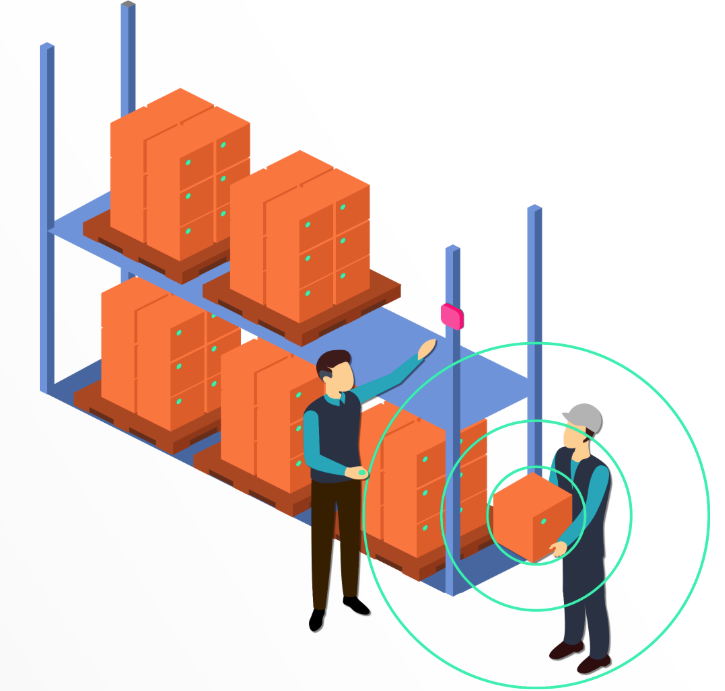In the fast-paced world of modern manufacturing, financial compliance and audit accuracy are critical for maintaining trust and profitability. Yet, many organizations still depend on manual asset tracking and disconnected systems, leading to data inconsistencies, inefficiencies, and compliance risks.
Real-Time Location Systems (RTLS) are transforming that landscape. By providing automated, continuous visibility into assets, materials, and equipment, RTLS helps companies streamline operations while strengthening financial oversight and audit readiness.
Here’s how RTLS in the automotive supply chain and other industries is becoming a strategic tool for compliance and financial control.
1. Accurate Asset Tracking for Audits
Auditors require proof of asset existence, ownership, and valuation — tasks that often consume weeks of manual inventory work. RTLS automates this process by tracking every tagged asset in real time.
This ensures instant, accurate verification of asset locations and utilization histories. The result? Faster reconciliations, fewer discrepancies, and stronger confidence in financial reporting accuracy.
Example: RTLS in the Automotive Supply Chain
Automotive suppliers manage vast fleets of returnable containers, racks, and high-value tools moving between plants, warehouses, and OEMs. Without RTLS, these assets are often lost, misplaced, or miscounted, creating costly write-offs and financial reporting issues.
By deploying RTLS, companies gain end-to-end visibility into container and equipment movement. They can verify exactly where every asset resides, reducing inventory shrinkage and ensuring accurate asset valuation for audits.
2. Stronger Internal Controls and Compliance
RTLS strengthens internal controls by tracking asset movement automatically and enforcing operational boundaries. If a high-value item moves outside its authorized zone or after hours, the system logs and alerts compliance teams immediately.
This automated audit trail supports internal control frameworks such as SOX (Sarbanes-Oxley Act) by ensuring traceable, verifiable data without relying on manual reporting.
For global manufacturers, this real-time visibility also simplifies compliance with international standards — from ISO 9001 to IATF 16949 — by providing consistent, timestamped asset movement data.
3. Automated Data Integrity and Audit Traceability
Auditors increasingly expect digital traceability. RTLS delivers that by continuously recording asset movements and interactions, producing a tamper-proof digital log of operational data.
When integrated with ERP, MES, or financial systems, RTLS ensures consistent, synchronized data across platforms. During audits, finance teams can provide auditors with precise, time-stamped movement records instead of relying on reconstructed or anecdotal evidence.
This level of data integrity directly supports financial audit automation, helping organizations move toward continuous compliance and digital assurance.
4. Reduced Audit Preparation Time and Cost
Audit preparation is traditionally resource-intensive. Finance and operations teams spend countless hours locating and validating assets to satisfy auditor requests.
RTLS eliminates much of that burden. With real-time asset visibility and automated reporting, companies can quickly generate accurate audit documentation.
The benefits are twofold:
- Faster audit cycles and fewer disruptions to operations.
- Lower administrative costs from reduced manual verification and data entry.
For automotive suppliers managing global operations, this efficiency translates into significant cost savings during quarterly and year-end audits.
5. Compliance with Industry and Financial Regulations
RTLS supports compliance with multiple regulatory frameworks that govern asset management, data integrity, and reporting accuracy.
In the automotive supply chain, this includes traceability requirements tied to OEM contracts, financial lease agreements, and environmental compliance standards.
For instance, RTLS can automatically verify the return of leased tooling or jigs, preventing financial disputes and ensuring correct asset depreciation schedules. The data can also feed directly into ERP systems to maintain accurate capital asset records for compliance reporting.
6. Real-Time Transparency and Continuous Assurance
RTLS enables organizations to move from reactive compliance to continuous assurance. With real-time visibility into equipment usage, workflow patterns, and space utilization, companies can identify irregularities before they escalate into compliance issues.
This proactive approach strengthens both financial governance and operational transparency, fostering collaboration between finance, compliance, and operations teams — all working from a shared, data-driven foundation.
Key Benefits of RTLS for Financial Compliance and Audits
- Real-time verification of asset location and utilization
- Automated audit trails and tamper-proof digital logs
- Reduced audit preparation time and costs
- Improved data integrity for ERP and financial systems
- Continuous compliance with SOX, ISO, and IATF standards
- Enhanced transparency across global automotive supply chains
Conclusion: RTLS Turns Compliance Into a Strategic Advantage
In industries like automotive manufacturing, where thousands of assets move through complex supply chains daily, Real-Time Location Systems are becoming essential tools for compliance, efficiency, and audit readiness.
By integrating RTLS with financial and enterprise systems, organizations can ensure continuous compliance, reduce audit friction, and gain actionable insights that strengthen financial governance.
RTLS isn’t just about tracking, it’s about transforming compliance into a strategic advantage for the future of smart, data-driven manufacturing.
To learn more about how Cassia Networks can enable your RTLS solution using Lamplight Logistics, reach out to sales@cassianetworks.com to get connected with our team members.
To learn more about Lamplight Logistics, reach out to team@lamplightlogistics.com to get connected with their team.










